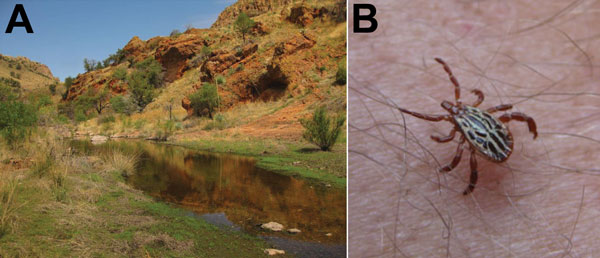Volume 22, Number 5—May 2016
CME ACTIVITY - Synopsis
Rickettsia parkeri Rickettsiosis, Arizona, USA
Figure 1

Figure 1. A) Typical habitat in the Pajarito Mountains in Santa Cruz County, Arizona, USA, near the location where patient 1 sustained a bite from a tick that resulted in Rickettsia parkeri rickettsiosis in July 2014. B) Male tick identical to the tick that bit patient 1. The distinctive white ornamentation on the scutum and disjunct geographic origin strongly support its presumptive identification as Amblyomma triste.
Page created: April 13, 2016
Page updated: April 13, 2016
Page reviewed: April 13, 2016
The conclusions, findings, and opinions expressed by authors contributing to this journal do not necessarily reflect the official position of the U.S. Department of Health and Human Services, the Public Health Service, the Centers for Disease Control and Prevention, or the authors' affiliated institutions. Use of trade names is for identification only and does not imply endorsement by any of the groups named above.